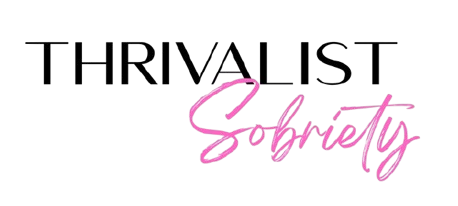
What to expect when you quit drinking – PART ONE
Over the next three weeks, we are going to delve in to what to expect mentally, physically and spiritually over the first three months after you quit drinking. In this first blog, we unpack what the initial 2-4 week period of quitting alcohol looks like and what you can proactively do to help ensure that if you have decided to quit for good or take a decent amount of time off, you don’t reach for the bottle. Next week we will discuss how to handle the craving in the boiling hot heat of the moment, then in the third week, we will cover the benefits of quitting alcohol and help build up your excitement about this wondrous journey ahead.
Detox looks different for everyone.
The initial 72 hours after you stop drinking is when the peak of your physical withdrawal occurs. As the alcohol leaves your system, your body expels the toxins rapidly leaving you dehydrated, and depending on how much you were drinking, this may feel like a hangover or it may be more than that. Withdrawal symptoms can include a rise in blood pressure, shakiness or tremors, sweating, heart palpitations and insomnia as well as the usual hangover symptoms like headache and nausea. At this stage, anxiety and depression can also be amplified.
NB: Watch out for serious withdrawal symptoms
Delirium tremens (DTs) is a sudden confusion that may be paired with hallucinations, shaking, irregular heart rate, and an increase in body temperature so high that it can sometimes lead to seizures. The onset of DTs often occurs around 72 hours into the withdrawal symptoms and lasts around two to three days. If you think there’s even the slightest chance that you’re at risk of developing DTs after you quit drinking, it’s extremely important that you seek help ,to detox safely from alcohol, under the supervision of a medical professional. Alcohol is one of the most dangerous drugs from which to withdraw and, if done without supervision, can lead to death.
After 72 hours, physical symptoms should start to subside
If DTs aren’t an issue for you, after around three days, your withdrawal symptoms are likely to begin to subside. At this stage your body starts to create a new equilibrium that no longer includes alcohol and its effect. This is also referred to as homeostasis; the tendency to resist change in order to maintain a stable, relatively constant internal environment.
You may not sleep well initially
Your body and brain may take some time to adjust to falling asleep on it’s own, without the anethesising effects of alcohol. It may take a few days, or a few weeks, but know that eventually, you will find yourself sleeping better then ever and getting the most beautiful, restorative sleep that you have been craving.
Alcohol cravings are likely once you have reached homeostasis
Ever surprise yourself by feeling like a drink on a Wednesday or Thursday after spending Monday and Tuesday beating yourself up and swearing you’ll never drink again? If you’ve been drinking alcohol regularly, your body is going to notice when it’s gone and may not be happy about it. Just like any addictive substance, you must expect some form of alcohol craving in the early days of sobriety. The equilibrium your body created to adjust to alcohol in your system will no longer exist, which means you’re likely going to have some form of cravings. They are going to happen and you are just going to have to be so prepared when they do. For some, cravings can last weeks or months, but thankfully they do lessen in frequency and intensity over time, until they rarely occur. Every time you have a craving and don’t drink, you are retraining your subconscious to no longer associate alcohol with relieving triggering feelings. It gets easier and easier each time.
How to proactively prepare for cravings
A craving is made up of a combination of the mental symptoms which is essentially your lizard brain (AKA Wine Witch / Booze Bitch) telling you it’s OK to have a drink when you feel a physical yearning (trigger), so you drink, and in doing so you strengthen the ‘craving cycle’. The cycle continues and gets more and more embedded in your subconscious each time you cave in to the craving. If you have been drinking forever (like I had) please don’t worry about this too much. It is not as hard as you think to overcome the cravings and retrain your subconscious, if you do some work to proactively prepare for them.
1. Your Why
Spend some time as soon as you decide to quit to write out your ‘Why’. Prepare it in either bullet point, or a paragraph or even a letter to your future self. Get really clear about what sobriety means to you and why you have made this incredible decision for yourself.
2. Actively de-condition your subconscious
We have all been conditioned from a young age to believe that alcohol enhances our life, when actually it doesn’t. Once you learn that actually, your mind is brainwashed to believe something that is false, you can’t unlearn this. It is extremely powerful knowing this when you are faced with a craving. We recommend you read or listen to This Naked Mind by Annie Grace to help you deconstruct those untrue beliefs to the point where you genuinely don’t see alcohol in the same way anymore. We want to get you to the point where you see alcohol as a toxic, carcinogenic poison disguised in pretty packaging. Something you don’t get any benefit from putting into your body.
3. Give your body what it really needs so it doesn’t need to send out cravings for alcohol
Research tells us that people who abuse alcohol, crave it when their blood sugar drops. The reason for this is because alcohol is high in sugar and it converts rapidly to sugar in the bloodstream. When we drink alcohol regularly, our body comes to expect it as a quick source of fuel. By eating a well balanced nutritious diet and maintaining a stable blood sugar, (especially at late-afternoon 5pm wine time!), you are reducing the chance of being hit by a craving.
4. Supplements
Get to your doctor or naturopath to make sure you are getting the right supplements! Amino acids and Vitamin B are two of the big ones used in recovery programs, and that we discuss in Thrivalist.
5. Sleep & Drink (water!)
If you’re tired, your body can get confused and crave alcohol instead of sleep as a quick pick me up. Get 7-8 hours a night and if you struggle with sleep, do some research on sleep hygiene techniques and create a bedtime routine for yourself. If you’re dehydrated, the body again can get confused and crave alcohol. So, drink 2-3 litres of water each day to avoid this.
6. Exercise
The feel-good chemicals released in the brain when we exercise are the same as when we drink. Getting your body moving and the endorphins flowing means you’ll feel good and will be less likely to feel like drinking. Even if it’s just walking for 20 mins a day.
7. Switch up your routine & Avoid high-risk situations
If you normally drink every Wednesday at 5pm, organise a healthy activity such as yoga or a run for that time instead. Ask the girls instead of going to the restaurant for dinner on Fridays, can you now meet for a walk and brunch on Saturday morning instead? Just until you’re ready to be out at night – you will be soon!
8. Prepare a plan for what to do when the triggers arise
Preparing a triggers plan ahead of time is a really successful way to help make sure you can move through cravings with more ease. A triggers plan is essentially compiling all of your triggering events and situations and preparing a plan for how you will respond when they arise.
Next week, we will take a look at how to survive a craving once it hits. We have several powerful tools to make sure you don’t get caught out without your bomb-proof craving-eradicating toolkit.

Post a comment